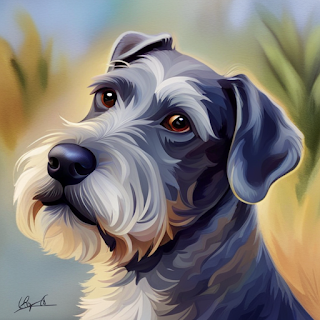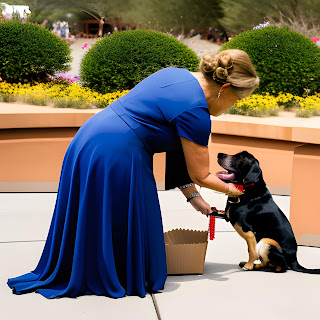What To Know About The Standard Schnauzer Dog
The Standard Schnauzer is a dog breed that originated in Germany. They are known for their distinctive appearance, with a square-shaped head and a thick, wiry coat. These dogs are intelligent, loyal, and energetic, making them great companions for active families. They are also highly trainable and excel in obedience and agility competitions. However, they can be stubborn at times and require firm but gentle training. Overall, the standard schnauzer is a wonderful breed for those who are willing to give them the attention and exercise they need.
➥The Standard Schnauzer dog breed is believed to be a cross between the black German poodle, a gray Wolfspitz and a Wire-haired Pinscher.
➥Belongs to working group
➥Average weight-males 35 to 45 lbs females 30 to 40 lbs
➥The Standard Schnauzer was not known in the United States until after World War I
➥Coat colors of this breed are salt and pepper or pure black
➥Breed characteristics are arched eyebrows, beard and longer hair on it’s legs
➥The Schnauzer’s coat is considered to be odorless and allergen free
➥Has double-coated, harsh wiry coat that needs to be hand stripped regularly
Standard Schnauzers typically require hand stripping as part of their grooming routine to maintain their wiry coat and to keep it looking its best. This involves pulling out dead hairs by hand rather than cutting them with clippers. It's best to consult with a professional groomer for advice on the best grooming practices for your particular dog.
The Standard Schnauzer dog breed is a highly intelligent, versatile, independent working dog that excels in most canine sports. Known as the dog with a human brain he requires consistent and firm training and a smart owner. Training needs to begin at a young age with the Schnauzer dog breed since this is a breed that tries to be the boss. They love long walks with their owners, chasing balls, playing frisbee and chasing their canine friends. The Schnauzer breed is considered a high energy dog with a strong need for consistent exercise for his physical and emotional health.
The Schnauzer is often referred to as a dog with a human brain due to its high intelligence and ability to understand and communicate with its owners in a unique way. This breed is known for being highly trainable and adaptable, making them great companions for families and individuals alike. Their intelligence also makes them well-suited for tasks such as therapy work, search and rescue, and even law enforcement. Overall, the Schnauzer's unique combination of intelligence, loyalty, and affection make them a beloved breed among dog owners worldwide.
The Standard Schnauzer dog breed is a highly intelligent, versatile, independent working dog that excels in most canine sports. Known as the dog with a human brain he requires consistent and firm training and a smart owner. Training needs to begin at a young age with the Schnauzer dog breed since this is a breed that tries to be the boss. They love long walks with their owners, chasing balls, playing frisbee and chasing their canine friends. The Schnauzer breed is considered a high energy dog with a strong need for consistent exercise for his physical and emotional health.
The Schnauzer is an extremely alert breed and very protective of his family. This breed is territorial and makes an excellent watch dog. He will be affectionate and devoted to you but wary of strangers. They are used in the United States for bomb detection, search and rescue and for detecting skin and lung cancer.
The Schnauzer gets along with children but has a strong prey drive and should not be trusted with small animals. He has a short body and a long neck. His v-shaped button ears are cropped erect or can be left natural. The tail is docked short and carried erect. The double coat has a short soft undercoat and harsh wiry outer coat. This breed is intelligent and highly trainable.
The standard schnauzer is a sturdy and robust breed of dog that is generally known for its good health and long lifespan. With proper care and nutrition, these dogs can live for up to 15 years or more. However, like all breeds, they are susceptible to certain health issues such as hip dysplasia, eye problems, and skin allergies. Regular exercise, a balanced diet, and routine check-ups with a veterinarian can help ensure that your standard schnauzer stays healthy and happy throughout its life.
There are many famous Standard Schnauzer dogs! Here are a few:
- Ch. Charisma Jailhouse Rock ("Elvis"), who won Best in Show at the Westminster Kennel Club Dog Show in 1997
- Ch. Pepper Tree Zorro V Morgenwald ("Zorro"), who won Best in Show at the Westminster Kennel Club Dog Show in 1989
- Ch. Skansen's C'Sofia Loren ("Sophia"), who won Best in Show at the Westminster Kennel Club Dog Show in 1980.
Here are three frequently asked questions about the Standard Schnauzer dog breed:
1. What is the temperament of a Standard Schnauzer?
Standard Schnauzers are known for their loyal and affectionate nature. They are intelligent, energetic dogs that are highly trainable and make great companions for active families. They can be protective of their family and are generally good with children.
2. How much exercise does a Standard Schnauzer need?
Standard Schnauzers are an active breed and require daily exercise to keep them healthy and happy. They enjoy brisk walks, jogging, hiking, and playing games like fetch. They also benefit from mental stimulation, such as obedience training or puzzle toys.
3. What health issues are common in Standard Schnauzers?
Like all breeds, Standard Schnauzers are prone to certain health issues. Some of the most common health concerns for this breed include hip dysplasia, eye problems such as cataracts and progressive retinal atrophy, and autoimmune diseases. It's important to work with a reputable breeder and schedule regular vet checkups to ensure your dog stays healthy.


.png)

.jpg)
.jpg)

.png)

.jpg)
.jpg)
